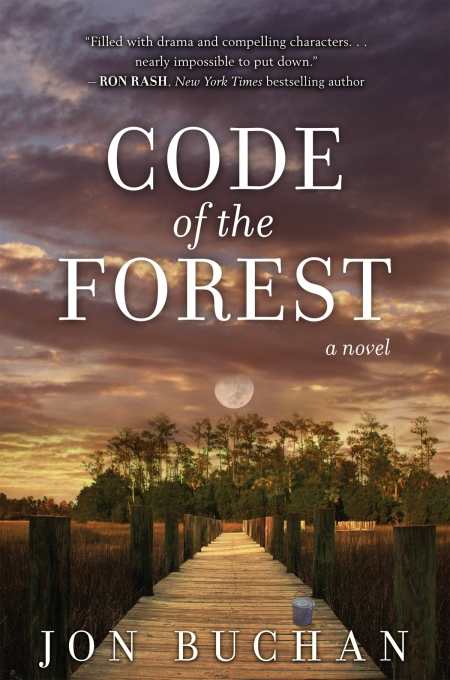Code of the Forest
- 2012 INDIES Finalist
- Finalist, Literary (Adult Fiction)
Extra! Extra! Read all about it! The Good Guys Win! Even though there is never any doubt that Wade Mc Nabb with the help of Kate Stewart will triumph over the political and social influences of the “old boys network” led by Senator Buck Ravenel, Code of the Forest offers a well-told story with smart characters.
When reporter Sandy Anderson learns that the senator and his son, Tripp, have exchanged approval of an environmentally damaging phosphate plant for inclusion as silent partners in a lucrative real estate deal, Wade Mc Nabb, editor of the Georgetown Pilot, risks his newspaper to maintain the integrity of the story and to protect the identity of its source. Wade relies on Kate Stewart, a successful lawyer who mistrusts the goals of newspapers, to defend him in the libel case instigated by Senator Ravenel. Ravenel hopes to locate and destroy the traitor to the “code of the forest.” At Bowman’s Forest, a private hunting and fishing preserve, the code, grown through a network of favors given and received, is the way “bidness” has been done in the Carolinas for generations.
Code of the Forest is not just a courtroom drama. It explores the personal conflicts and motivations of its key characters. Wade and Kate, for instance, each bear a burden from their pasts. The book also recognizes the beauty of a fragile eco-system and the connections between personal and national histories. It celebrates the quiet crusader who believes “The truth shall set you free.”
Smart characters appear at every turn of the story. Wade and Kate quote Shakespeare as easily as the bartender Bobo quotes lyrics from the songs on the jukebox. Kate’s best friend, Carolyn Brown, works for the Sierra Club. Senator Ravenel’s clever way of questioning, leading, and manipulating witnesses reveals his diabolical intelligence. The smartest character is actually the witness for the prosecution who turns the case around.
Buchan uses his experience as a journalist and lawyer most aptly when he presents the nuances of the courtroom—Ravenel’s tendency to Southern dialect, the judge’s telling facial gestures. He evokes a sense of place with details like the crescendo of women’s voices as they “head” shrimp at the dock. They “hum and moan notes…. [until all] voices rose in unison on the next line.” His knowledge of history, geography, and small town life in coastal South Carolina permeates the prose. A reader may also appreciate the author’s sense of humor: a wise fisherman named John Buchan is quoted by Wade.
In this first novel, Buchan introduces multiple plot lines and not all succeed equally. The environmental issues that surface are given little weight; the romance between Kate and Wade is not well developed. In spite of these weaknesses, however, readers who want to see simple justice served will enjoy Code of the Forest.
Reviewed by
Geraldine A. Richards
Disclosure: This article is not an endorsement, but a review. The publisher of this book provided free copies of the book and paid a small fee to have their book reviewed by a professional reviewer. Foreword Reviews and Clarion Reviews make no guarantee that the publisher will receive a positive review. Foreword Magazine, Inc. is disclosing this in accordance with the Federal Trade Commission’s 16 CFR, Part 255.

